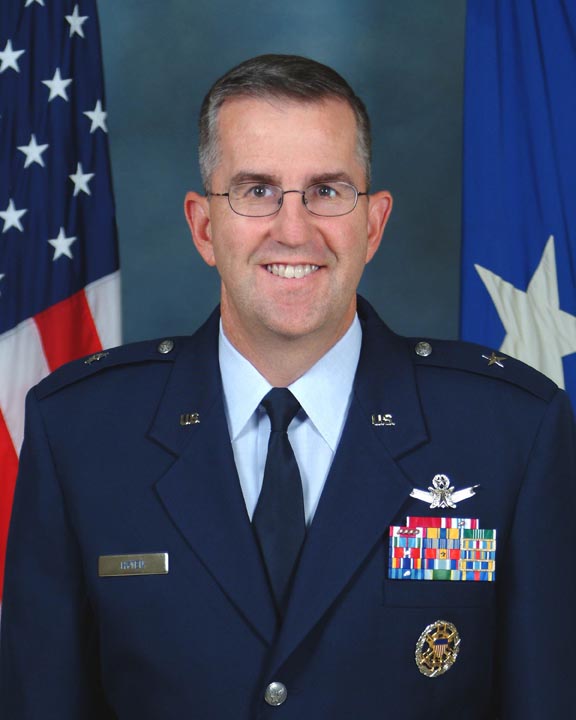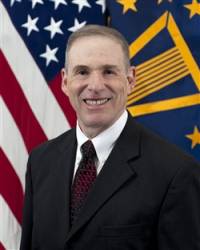 General John (Jay) Raymond
General John (Jay) Raymond The ground was already shifting when Gen. John (Jay) Raymond took charge of Air Force Space Command (AFSPC) in October 2016. Just six months before, his predecessor Gen. John Hyten had announced the Space Enterprise Vision, a new way of approaching space asset development, management and protection now that space had become both contested and far more crowded. There were issues across the space, ground and user segments of the GPS program; sequestration was still looming and Congress was looking closely at how to reorganize the way the Air Force managed its space programs.
The ground was already shifting when Gen. John (Jay) Raymond took charge of Air Force Space Command (AFSPC) in October 2016. Just six months before, his predecessor Gen. John Hyten had announced the Space Enterprise Vision, a new way of approaching space asset development, management and protection now that space had become both contested and far more crowded. There were issues across the space, ground and user segments of the GPS program; sequestration was still looming and Congress was looking closely at how to reorganize the way the Air Force managed its space programs.
But Gen. Raymond was prepared to hit the ground running. He’d had four Air Force Space Command assignments already plus a host of space-related leadership posts including commanding the 5th Space Surveillance Squadron at Royal Air Force Feltwell, England, the 21st Space Wing at Peterson AFB, Colorado and the 14th Air Force, United States Strategic Command, Joint Functional Component Command for Space. He also had served as director of Space Forces in support of Operations Enduring Freedom and Iraqi Freedom.
Gen. Raymond shared his perspectives on what the next few years may bring, responding to written questions submitted by Inside GNSS on the future of the GPS program in these changing times.
Inside GNSS: The space, ground and user equipment elements of the GPS program have each experienced significant challenges over the last several years. What are your top three goals for these programs for the coming year and what priorities will you use to guide any tradeoffs you may have to consider?
Gen. Raymond: My number one priority for the enterprise is launching the first of the Next Generation GPS III satellites, which will have much-needed capabilities including increased power and anti-jam signals. Just last month, GPS III Space Vehicle 01 completed its first integrated launch rehearsal with our upgrade to the satellite operations software, the Next-Generation Operational Control System (OCX) Block 0, exercising key mission events and establishing crew proficiency. Launch is currently planned for spring 2018.
My next priority will be stabilizing the OCX development program. To do so, we are focused on OCX development operations to support completing software coding, integration and testing.
Finally, we are extremely focused on completing development for the Military GPS User Equipment (MGUE) program’s M-Code receiver card for ground users. M-Code is a new, secure signal for military users that is a capability of the GPS III system. We are also working toward our first security certification for an aviation/maritime user receiver card. We’ve had progress with prototype M-Code capable receivers that were integrated and tested on the B-2 Bomber during four flight tests in June 2017, but we need to continue this progress to support our next phase of Operational Test & Evaluation planned with the four lead platforms.
Inside GNSS: As you work to implement the Space Enterprise Vision, what measures do you envision taking to protect GPS capability against hostile actions in space?
Gen. Raymond: We’ve actioned the Space Enterprise Vision in a series of distinct lines of effort, called the Space Warfighting Construct — it’s a framework for making the SEV a reality. One line of effort within the construct is a focus on employing a resilient architecture for all AFSPC [Air Force Space Command] systems, including for all three segments of the GPS Enterprise (space, ground and user equipment). These architectures will employ multiple mission assurance attributes to ensure we are able to deliver persistent, critical space warfighting capabilities.
Inside GNSS: Monitoring of the civil GPS signals, including paying for such monitoring, continues to be a concern. While everyone, including the Defense Department, benefits from civil GPS signals, Congress has failed consistently to fully fund the budget request for civil signal monitoring. As the GPS Next-Generation Operational Control System (GPS OCX) evolves, the approach to such monitoring capabilities also may evolve and change. How will you approach civil signal monitoring, especially given these challenges?
Gen. Raymond: The GPS Next-Generation Operational Control System will provide programmed-in civil signal and military signal monitoring. The Department of Transportation (DoT) has expressed interest in enhanced civil signal monitoring capabilities beyond those provided by OCX and they are the lead for these potential enhancements.
Inside GNSS: The Air Force is looking at options for future iterations of the GPS constellation that may not have been fully considered before, for example satellites with a shorter design life. What are you hoping to achieve with such changes and why not implement some of these changes earlier?
Gen. Raymond: The Air Force Space Command seeks to build resiliency across the entire space enterprise. A key pillar in resiliency is rapid refresh and/or recovery. AFSPC Space & Missile Systems Center is investigating alternative constellation possibilities to enable rapid changes in the next generation of GPS. These potential changes, while promising, are in the early stages of maturity, and implementation risk must be balanced with maintaining the vital global service that billions of GPS users depend on every day.





